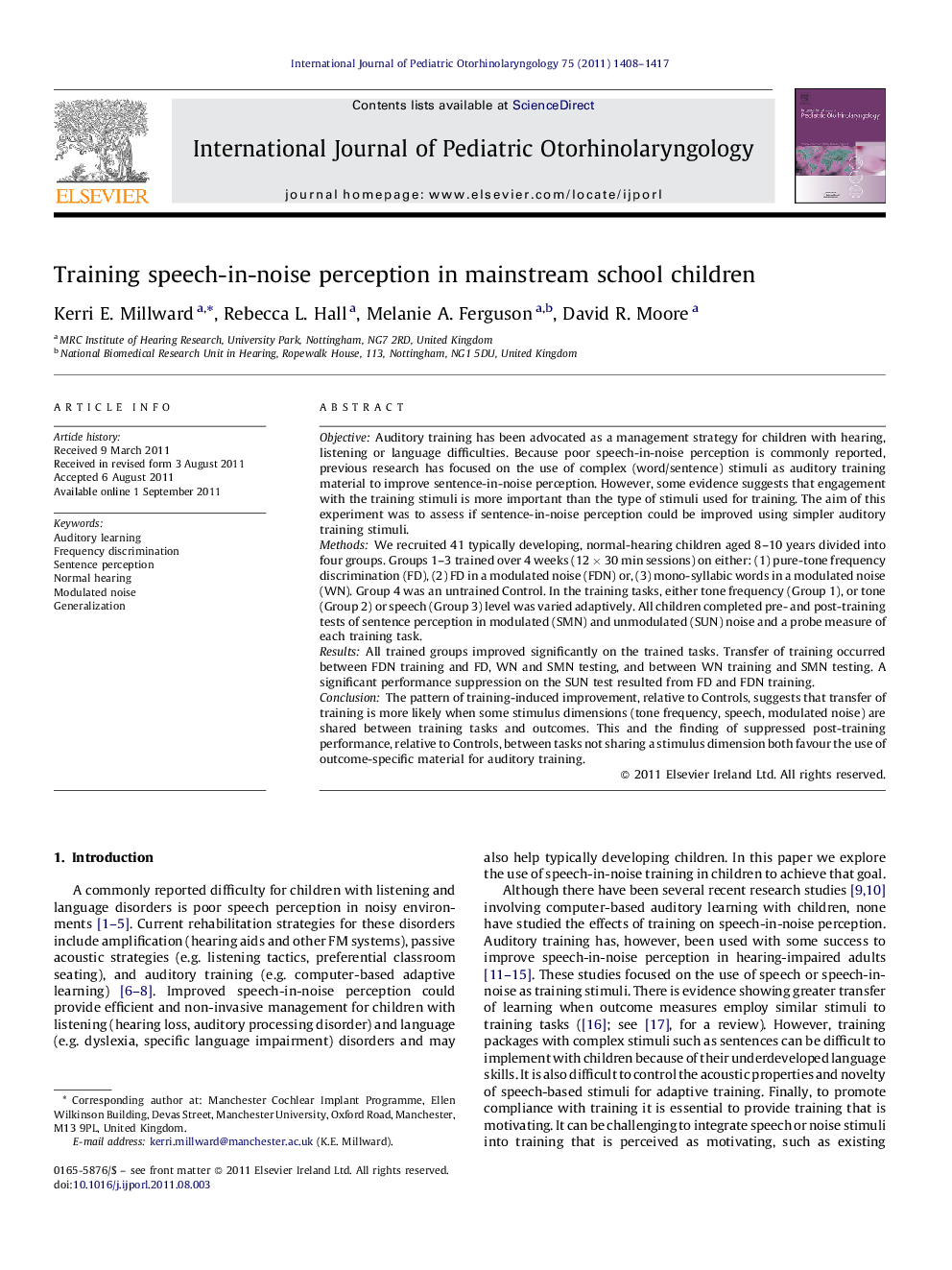| کد مقاله | کد نشریه | سال انتشار | مقاله انگلیسی | نسخه تمام متن |
|---|---|---|---|---|
| 4112720 | 1606039 | 2011 | 10 صفحه PDF | دانلود رایگان |

ObjectiveAuditory training has been advocated as a management strategy for children with hearing, listening or language difficulties. Because poor speech-in-noise perception is commonly reported, previous research has focused on the use of complex (word/sentence) stimuli as auditory training material to improve sentence-in-noise perception. However, some evidence suggests that engagement with the training stimuli is more important than the type of stimuli used for training. The aim of this experiment was to assess if sentence-in-noise perception could be improved using simpler auditory training stimuli.MethodsWe recruited 41 typically developing, normal-hearing children aged 8–10 years divided into four groups. Groups 1–3 trained over 4 weeks (12 × 30 min sessions) on either: (1) pure-tone frequency discrimination (FD), (2) FD in a modulated noise (FDN) or, (3) mono-syllabic words in a modulated noise (WN). Group 4 was an untrained Control. In the training tasks, either tone frequency (Group 1), or tone (Group 2) or speech (Group 3) level was varied adaptively. All children completed pre- and post-training tests of sentence perception in modulated (SMN) and unmodulated (SUN) noise and a probe measure of each training task.ResultsAll trained groups improved significantly on the trained tasks. Transfer of training occurred between FDN training and FD, WN and SMN testing, and between WN training and SMN testing. A significant performance suppression on the SUN test resulted from FD and FDN training.ConclusionThe pattern of training-induced improvement, relative to Controls, suggests that transfer of training is more likely when some stimulus dimensions (tone frequency, speech, modulated noise) are shared between training tasks and outcomes. This and the finding of suppressed post-training performance, relative to Controls, between tasks not sharing a stimulus dimension both favour the use of outcome-specific material for auditory training.
Journal: International Journal of Pediatric Otorhinolaryngology - Volume 75, Issue 11, November 2011, Pages 1408–1417